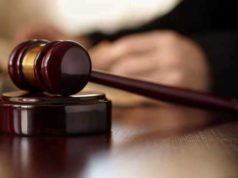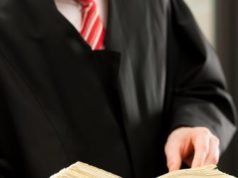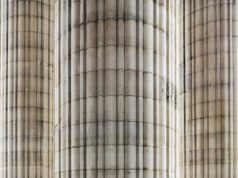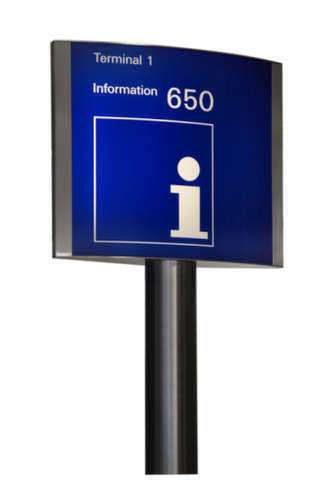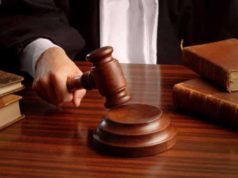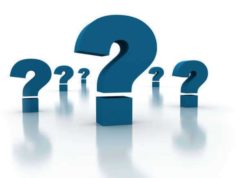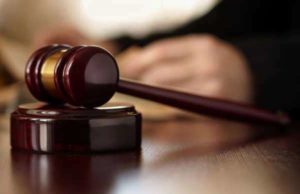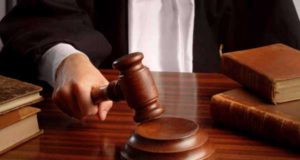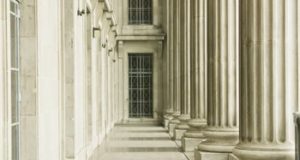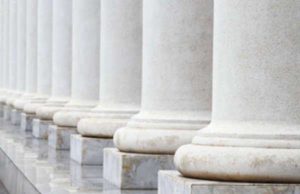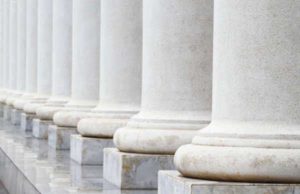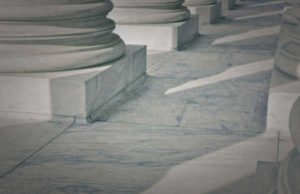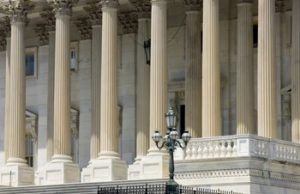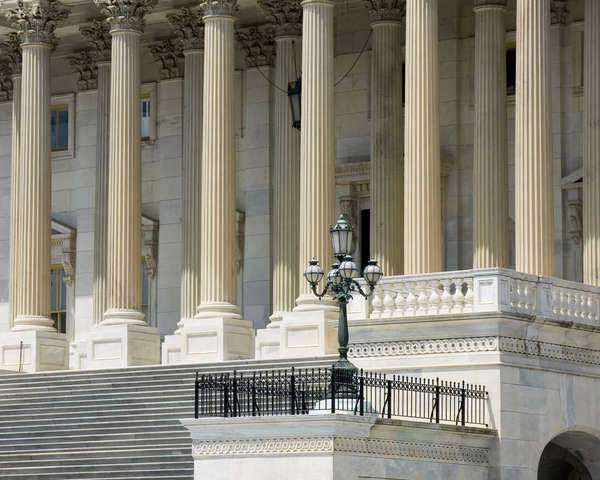
Supreme Court Justice: John Jay
John was an American politician, revolutionary, diplomat, statesman, Founding Father, and the very first Chief Justice of the United States Supreme Court from 1789 to 1795.
John Jay also served as the President of the Continental Congress between 1778 and 1779. John Jay was a minister to both Spain and France during and after the American Revolution, where he helped design United States foreign policy, and worked to secure favorable terms of peace from Great Britain through Jay’s Treaty of 1794 as well as favorable terms of peace with the First French Republic. John Jay, along with James Madison and Alexander Hamilton, co-wrote the Federalist Papers.
As a member and leader of the new Federalist Party, John Jay acted as the Governor of New York State between 1795 and 1801, and he also became the state’s strongest opponent of slavery. His first two attempts in 1777 and 1785 to emancipate the slaves in New York failed, but his third attempt in 1799 succeeded. The success in 1799 of the gradual emancipation act that John Jay signed into law ultimately brought about the emancipation of the New York slaves before Jay’s death in 1829.
John Jay was born in New York City on December 12, 1745 as the sixth son and the eighth child in his family. Jay was raised in Rye, New York, and had the same political opinions as his father, who was a very strong Whig. Jay was educated in Rye by private tutors until the age of eight, when he was then sent to New Rochelle where he studied under Anglican pastor Pierre Stoupe. After three years, jay returned to his homeschooling under the instruction of George Murray. In 1760, Jay went on to continue his education at King’s College, where he graduated four years later and took on the role of a law clerk for Benjamin Kissam.
After reading law getting admitted to the New York bar in 1768, Jay worked at a legal practice created by Robert Livingston using government money, until 1771, where he established his own law office. Jay’s first public role was the secretary to the committee of correspondence of New York, where Jay represented the conservative group that was looking to protecting property rights and preserve the rule of law while resisting the “British violations” American rights. This group of individuals feared the idea of “mob rule”. Jay believed the British tax measures that were placed were wrong and that Americans were legally and morally justified in resisting these taxes.
However, as a delegate in 1774 to the First Continental Congress, Jay sided with individuals who wished for conciliation with Parliament. Events like the burning of Norfolk, Virginia, in January 1776 pushed John Jay to support independence for America. After the American Revolutionary War broke out, Jay tirelessly worked for the revolutionary cause and fought to suppress the Loyalists, making Jay into first a moderate and then later a strong Patriot after he decided that the colonies’ efforts aimed towards reconciliation with Britain were completely fruitless and that the fight for independence which ultimately became the American Revolution was inevitable.
In September 1789, President George Washington offered John Jay the position of Secretary of State, but Jay declined. President Washington responded to this by offering Jay the position of the first Chief Justice of the Supreme Court of the United States, which he accepted. Jay was officially nominated by Washington on September 24, 1789, which was the same day that Washington signed the Judiciary Act of 1789 into law, which created the Chief Justice position. On September 26, 1789Jay was confirmed unanimously by the United States Senate, and he received his commission on the same day. Jay’s term began on October 19, 1789 with his taking his oath of office. President Washington also nominated William Cushing, John Blair, James Iredell, John Rutledge, and James Wilson as Associate Judges.
The business of the Supreme Court through the first three years mainly involved the establishment and application of rules and procedure, such as the admission of attorneys to the bar and reading of commissions. The Justices’ also had duties in riding circuit, or presiding over various cases in the different circuit courts of the many federal judicial districts.
There was no convention at the time that precluded the involvement of the Justices from political affairs, so Jay used his mild workload as a Justice as a way to freely participate in the business of President Washington’s administration. Jay also used his circuit riding to spread information throughout the states about Washington’s commitment to neutrality for the county, and then he published reports of the French minister’s, Edmond-Charles Genet, campaign to win the American support for France.
However, John Jay also created an early precedent for the independence of the Supreme Court in 1790, when the Treasury Secretary Alexander Hamilton wrote to Jay asking for the Supreme Court’s endorsement of a piece of legislation that could assume the debts of the states. John Jay replied that the Supreme Court’s business was restricted just to ruling on the constitutionality of court cases being tried before it and because of this, he refused to allow the court to take a position regarding the legislation.
Famous Cases
Van Staphorst v. Maryland (1791): The first court case docketed with the Supreme Court of the United States. While the Supreme Court agreed to hear and decide on this case, the law suit was settled before oral arguments could begin in Court. In this Supreme Court case, the Van Staphorst brothers gave money to the State of Maryland as a loan during the Revolutionary War era. Afterwards, the State of Maryland refused to pay back the loans to the Van Staphorst brothers in accordance to the terms that were set by the Van Staphorst brothers. After the threat of having to undergo Supreme Court litigation, both parties finally settled the court case with each other.
West v. Barnes (1791): The first decision made by the United States Supreme Court and the first Supreme Court case which called for oral arguments. Prior to this, the case Van Staphorst v. Maryland was docketed, but that case was settled before the Supreme Court could hear the case. West v. Barnes was argued in front of the Court on August 2, 1791 and it was decided upon on August 3, 1791.
William West was a revolutionary war militia general, farmer, a judge from Scituate, Rhode Island, and an anti-federalist leader. Due to a failed molasses deal to the Jenckes family from Providence in 1763, he owed a mortgage on his farm. William West made payments for twenty years on the mortgage, and then asked the state for permission to set up and run a lottery in 1785 in order to help pay off the rest. Because of West’s services during the Revolution, the state of Rhode Island granted him the permission to do so. Many of the proceeds were not paid in gold or silver, but instead were paid in paper currency. William West tendered the payment in the paper currency which was allowed according to the statute by since he was lodging the money with a state judge, which would be collected within 10 days.
David Leonard Barnes, a well-known attorney and an heir of the Jenckes family, eventually brought forward a lawsuit in a federal court based on the diversity jurisdiction which asserted that silver or gold payment was needed, rather than the paper currency. Despite the lack of formal legal training, William West represented himself pro se in June 1791 in the circuit court before Chief Justice John Jay and two other justices. All of them rejected his arguments. West then tried to appeal the case to the Supreme Court on a writ of error, in an attempt to comply with all of the statutory directions. William West was not able to travel to Philadelphia to represent himself in the suit, so he hired Pennsylvania’s attorney general, William Bradford, Jr., to represent him.
On the appeal, David Barnes examined the procedural irregularities of the case. He asserted that the writ had been only signed and sealed circuit court clerk in Rhode Island rather than the Supreme Court clerk, which he said was necessary. William West lost the case due to this procedural issue and eventually was forced to surrender his farm. The Supreme Court held that a writ of error needed to be issued within ten days by the Supreme Court Clerk as required by the Federal statute, rather than a lower court’s clerk. As a result, Congress ultimately modified this procedure with the section nine of the Judicial Act of 1792, which allowed circuit courts to issue writs, helping citizens who lived far away from the capitol.
This Supreme Court case was one of the earliest potential ones that could have allowed judicial review in the United States. In this case, the Supreme Court had the chance to overturn a statute enacted by Rhode Island State which discussed fulfilling a contract through lodging the payment a debt by using paper currency. However, the Supreme Court did not exercise any judicial review in respect to the legislature.
Hayburn’s Case (1792): A Supreme Court case where the court was invited to make a decision on whether Congress could assign certain non-judicial duties to the federal circuit courts which were in their official capacity. This case was the first time the Supreme Court looked at the issue of justifiability. Eventually, Congress reassigned the duties in question, and the Court did not have to give judgment in this case. At the time of the case, each of the Supreme Court Justices also served on a Circuit Court. Due to the fact, five of the six Justices including Justice John Jay declared it to be unconstitutional as judges in the District Courts.
Chisholm v. Georgia (1793): A Supreme Court case that was considered the first Supreme Court case of impact and significance. Because of the date, there is very little legal precedent available. The case was superseded almost immediately by the 11th Amendment. In South Carolina in 1792, Alexander Chisholm, who was the executor of the Robert Farquhar’s estate, tried to sue Georgia State in the Supreme Court regarding payments for goods that were owned by Farquhar from the American Revolutionary War. General Edmund Randolph, the U.S. Attorney, argued on behalf of the plaintiff. Meanwhile, Georgia refused to appear as the defendant, claiming that it could not be sued as a sovereign state without granting consent to the suit.
The Court, including Chief Justice John Jay, decided in a 4 to 1 vote in favor of the plaintiff. The justices argued that Article III, Section II, of the Constitution rescinded the sovereign immunity of the states and gave federal courts the power to hear disputes between States and private citizens. Because of the case, the Eleventh Amendment of the Constitution was ratified in 1795. Doing so removed federal jurisdiction in situations where citizens of a specific state tried to sue another state. However, a citizen of one state still had the power to sue the Federal courts if the state consented to the suit or if Congress abrogated the immunity of the state under the Fourteenth Amendment.
Georgia v. Brailsford (1794): A Supreme Court case where the judge presiding over the Court instructed the jury that they had the right to judge not only the law, but also the facts. This case is often thought of as the precedent of jury nullification. Chief Justice John Jay explained the opinion, which explicitly acknowledged jury nullification by saying that juries were the best judges of facts while courts were the best judges of law, but it still allowed juries to look at both parts to make a decision. Justice John Jay considered this case to be extremely importance. Because of this it was treated by the Supreme Court justices with great diligence, ability, and learning. While the facts understood in the case were agreed upon, the only real issue was deciding what the law of the land was coming out of the facts and whether it was proper for the Supreme Court to give that opinion.

